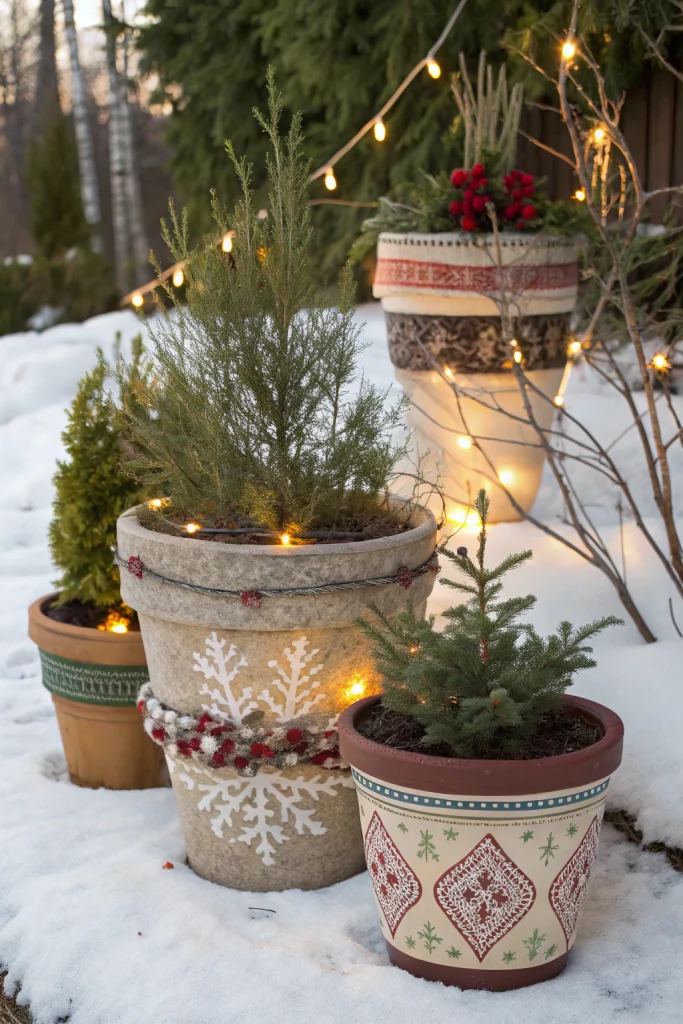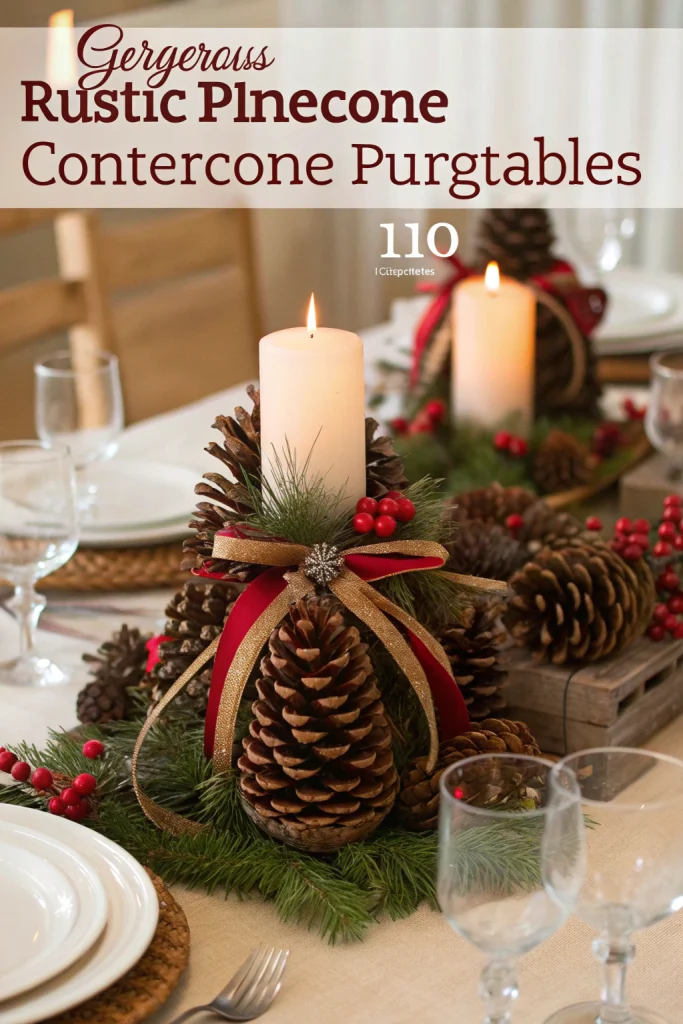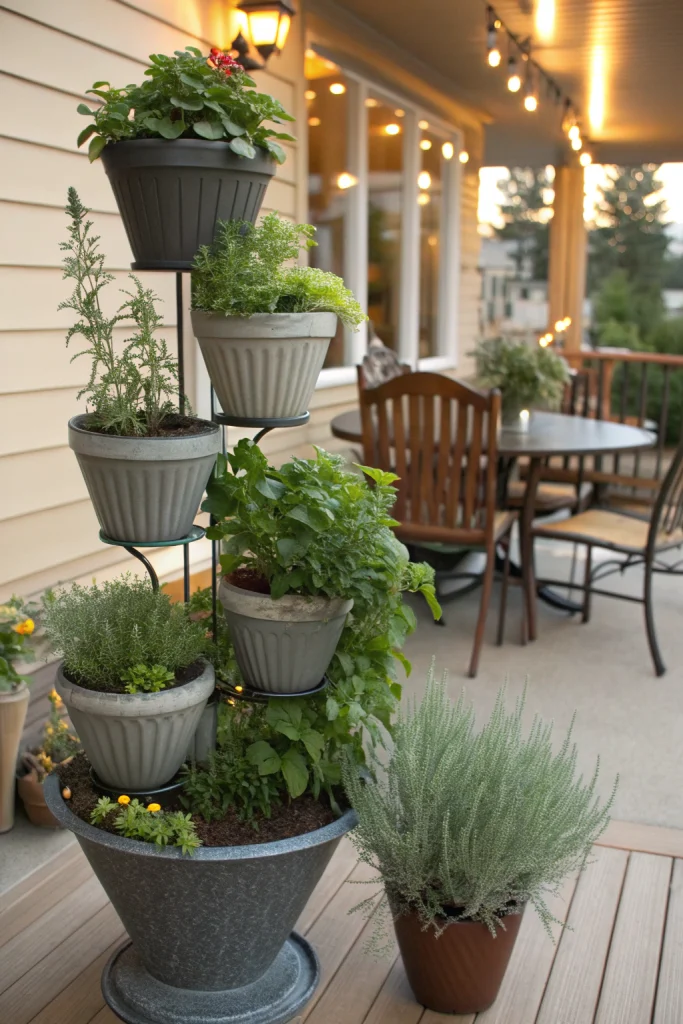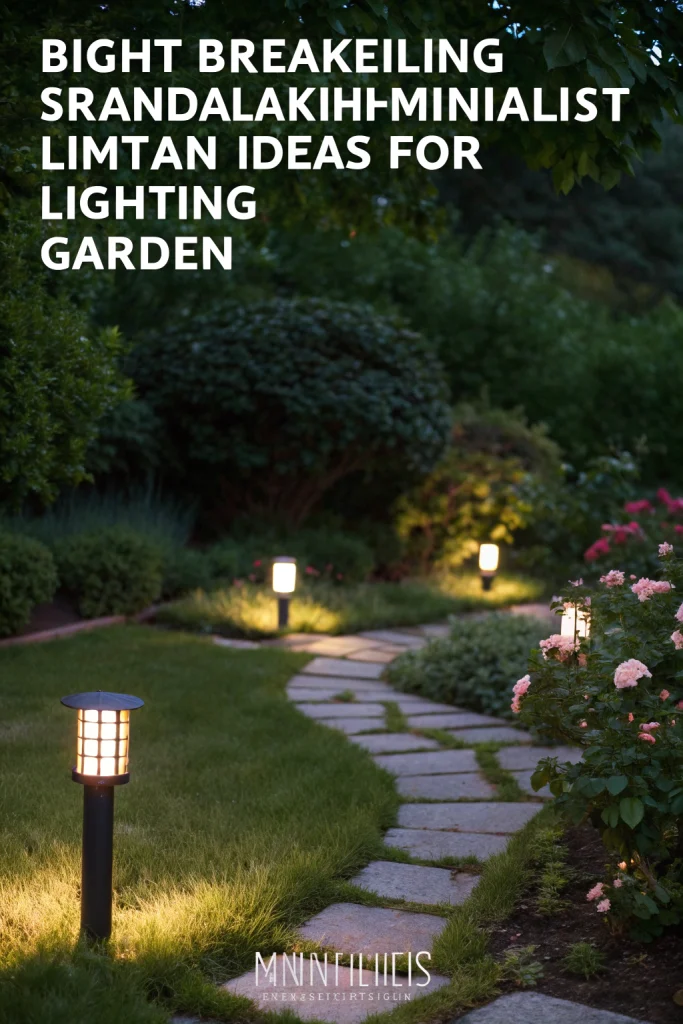Focus Keyword: Upcycle, Old, Pots, into
Table of Contents
ToggleUpcycle, Old, Pots, into — Transforming Garden Waste into Thriving, Sustainable Sanctuaries
Upcycle, Old, Pots, into blends practical, low-cost techniques with real environmental impact. Use these eco-first methods to reduce waste, save water, build living soil, and support pollinators—all while keeping your garden beautiful and productive through the cold season.
[lwptoc]
Why Upcycle, Old, Pots, into Matters This Season
Winter prep is when smart gardeners get ahead: leaves become mulch, rain becomes irrigation, and “waste” becomes soil food. With Upcycle, Old, Pots, into, you set resilient foundations now—so spring growth is faster, healthier, and cheaper. This proactive approach isn’t just about saving money; it’s about fundamentally shifting your gardening philosophy towards regenerative practices. By adopting these methods, you’re not merely preparing for the next growing season but actively contributing to local ecosystems and mitigating your environmental footprint. The benefits extend beyond immediate cost savings, fostering long-term soil health, biodiversity, and garden resilience against changing climatic conditions. Think of each old pot you find a new purpose for, or every leaf you gather, as an investment in a more sustainable future for your outdoor space. This season, embrace the philosophy of abundance from what you already have, turning overlooked materials into powerful assets for your garden’s vitality.
Core Materials & Tools for Your Upcycling Garden
The beauty of the Upcycle, Old, Pots, into approach lies in its simplicity and reliance on readily available, often free, resources. You don’t need expensive equipment to embark on this journey; rather, it’s about rethinking what constitutes “waste.”
- Dry leaves, shredded cardboard, twig cuttings: These form the backbone of your mulching and sheet-mulching efforts. Leaves, especially, are gold. They break down into nutrient-rich leaf mould, a superior soil amendment. Shredded cardboard suppresses weeds effectively and provides carbon. Twigs can be used for structural support in compost or as coarser mulch.
- Compost setup: This can be as simple as a pile in a corner, a store-bought bin, a DIY pallet bin, or specialized systems like bokashi or worm towers. For those limited to containers, a small worm tower integrated into a larger pot can be incredibly effective for processing kitchen scraps directly.
- Rain barrel with downspout diverter; watering can or soaker hose: Water harvesting is paramount for sustainable gardening. A rain barrel reduces reliance on tap water, which often contains chlorine and other chemicals detrimental to soil microbes. Watering cans and soaker hoses deliver water more precisely, minimizing waste compared to overhead sprinklers.
- Reusable pots (terracotta/metal/wood) and sturdy seed trays: The very essence of Upcycle, Old, Pots, into! Instead of buying new plastic, repurpose what you have. Terracotta offers good drainage, metal can be strikingly aesthetic (ensure it’s not galvanized if using for edibles, or line if it is), and wood provides insulation. Opt for durable seed trays that can be used repeatedly, ideally made from recycled materials or wood.
- Hand tools: A stainless steel trowel will resist rust and last for years. Sharp pruners are essential for clean cuts, promoting plant health. A sturdy rake is invaluable for gathering leaves and leveling soil. A simple sieve (even a repurposed old laundry basket or hardware cloth frame) is excellent for refining compost or creating a fine seed-starting mix from leaf mould.
Step-By-Step Method: Maximize Your Garden’s Potential with Upcycling
Step 1 — Build a No-Dig Base with Leaves
This foundational step is crucial for transforming your garden with minimal effort and maximum return. No-dig gardening respects the soil structure and its delicate microbial life. Begin by laying down a weed-suppressing layer. Use plain, uncoated cardboard — remove all tape and labels. Lay it directly on top of existing weeds or grass, overlapping the edges by 10–15 cm to prevent weeds from peeking through. Wet the cardboard thoroughly; this helps it settle and begin to break down, inviting earthworms and other beneficial organisms. Next, add a generous layer, 5–10 cm deep, of shredded dry leaves. Leaves are a fantastic source of carbon and beneficial fungi. If you have access to a leaf shredder, great; otherwise, simply running over them with a lawnmower in a collection bag works wonders. Top this leaf layer with a thin, even layer of compost – about 2-3 cm. This compost layer introduces essential microorganisms and acts as a “starter” for the decomposition process, drawing nitrogen-fixing bacteria to the carbon-rich leaves below. This method suppresses weeds without chemicals, conserves soil moisture, and jumpstarts a healthy fungal network critical for nutrient cycling by the time spring arrives. This layer, powered by your Upcycle, Old, Pots, into mindset, will become a rich, living soil ecosystem, ready to support vibrant plant growth.
Step 2 — Capture Rain & Water Smarter
Water is a precious resource, and efficient management is a cornerstone of sustainable gardening. Installing a rain barrel is one of the most impactful actions you can take. Connect it to a downspout (using a diverter kit ensures overflow goes back into your drainage system). A single rain barrel can collect hundreds of gallons of water over a season, perfect for your garden needs. Beyond collection, focus on smart watering practices. Water your garden early in the morning – this minimizes evaporation loss due to the sun and wind, and allows plants to absorb water before the heat of the day. Group pots by their water requirements; this prevents overwatering drought-tolerant plants or underwatering thirsty ones. A key technique embodying the Upcycle, Old, Pots, into principle is mulching your containers. Use leaves (from your garden!) or shredded bark on top of the soil in pots. This layer drastically reduces water evaporation, keeps soil temperatures more stable, and eventually breaks down to enrich the potting mix. Additionally, place saucers underneath your containers; add a layer of gravel to the saucers before placing the pot. This elevates the pot slightly, preventing root rot while allowing excess water to collect, which can then be absorbed slowly by the plant as needed, further reducing water waste. These simple steps ensure every drop counts.
Step 3 — Feed Soil Life Naturally
Healthy soil is teeming with life – bacteria, fungi, protozoa, nematodes, and earthworms. Your role as a sustainable gardener is to feed this intricate web, not just the plants. Start a cold compost pile, ideally with a mix of carbon-rich dry leaves and nitrogen-rich kitchen scraps or coffee grounds. Cold composting is slower but requires less active management. If you want faster results or have limited space, consider a bokashi system indoors for all your kitchen waste (including meat and dairy!), or a worm tower integrated into your garden. Bokashi ferments waste, creating a highly beneficial amendment that, when trenched into resting beds, rapidly breaks down and enriches the soil structure. For a truly refined soil amendment, consider sieving last year’s leaf mould. Leaf mould is simply decomposed leaves, and it’s a gardener’s best friend. Sieve it through a fine mesh (like hardware cloth or even an old colander) to create a light, fluffy, pathogen-free, and nutrient-rich medium. This silky seed mix is unparalleled for early sowings, providing the perfect environment for delicate seedlings to thrive. By focusing on feeding the soil with practices that embody Upcycle, Old, Pots, into, you create a self-sustaining system where plants flourish with minimal external inputs.
Step 4 — Balance Pests with Habitat
A thriving garden ecosystem naturally balances itself, reducing the need for interventions. Instead of reaching for pesticides at the first sign of a problem, consider how you can invite beneficial insects and birds that prey on garden pests. Keep select seed heads on plants through winter; these provide vital food sources for winter birds, who in turn help control insect populations. Create inviting habitat corners. Bundle hollow stems (like bamboo canes or dried sunflower stalks) together and place them in a sheltered spot for solitary bees. Pile up sticks, logs, and leaves in an out-of-the-way corner to provide shelter for frogs, toads, and ground beetles – all excellent slug and insect predators. When pest issues do arise, consider the mildest intervention first. A spray of diluted mild soap and water can deter aphids. Neem oil, derived from the neem tree, is another organic option that disrupts insect life cycles. Garlic sprays can also be effective natural repellents. The ultimate strategy, however, is companion planting. Interplanting marigolds with tomatoes, or nasturtiums as a trap crop, can confuse or deter pests. By integrating these habitat and biological control strategies, you build a resilient garden that largely polices itself, embodying the harmony of Upcycle, Old, Pots, into.
Environmental & Cost Impact of Embracing Upcycling
The impact of adopting the Upcycle, Old, Pots, into philosophy extends far beyond your garden gates, creating a ripple effect of environmental and economic benefits. Firstly, waste reduction is significant. You can divert countless bags of leaves, often perceived as “yard waste,” from landfills, where they contribute to greenhouse gas emissions as they anaerobically decompose. Instead, these leaves are transformed into invaluable mulch and nutrient-rich leaf mould, cycling nutrients back into your soil. Cardboard, another common discard, finds a second life as a weed barrier and soil builder. This directly reduces the burden on municipal waste systems and conserves the resources required to produce new materials. Secondly, the impact on water conservation is substantial. By implementing mulching techniques with repurposed leaves and installing rain barrels, you dramatically cut down your reliance on tap water for irrigation. This not only eases the strain on local water supplies, particularly in drought-prone areas, but also translates into lower water bills for you. The stored rainwater, free of chlorine, is also inherently better for your plants and soil microbiology. Thirdly, by focusing on building living soil through composting and no-dig methods, you reduce the need for synthetic fertilizers and pesticides. These chemical inputs often require significant energy to produce and transport, and their runoff can contaminate waterways. A healthy, biologically active soil, fed by your composted kitchen scraps and garden “waste,” naturally provides nutrients to plants, suppresses diseases, and holds moisture more effectively. This independence from external inputs results in considerable long-term cost savings. Lastly, creating habitat zones with bundles of sticks and undisturbed corners enhances biodiversity, supporting vital pollinators like bees and butterflies, as well as beneficial predatory insects and birds. This strengthens the local ecosystem, making your garden a hub of ecological activity. In essence, Upcycle, Old, Pots, into transforms your garden into a powerful engine for sustainability, proving that small, localized actions can lead to significant positive environmental change and a more resilient, cost-effective outdoor space.
Advanced Eco Hacks for the Dedicated Upcycler
Once you’ve mastered the basics, take your Upcycle, Old, Pots, into garden to the next level with these innovative techniques:
- Charge homemade biochar in compost tea before mixing into beds: Biochar is a stable form of carbon produced by heating organic matter in a low-oxygen environment. It dramatically improves soil structure, water retention, and nutrient availability. To maximize its benefits, “charge” it by soaking it in nutrient-rich compost tea for a few days before incorporating it into your garden beds. This infuses the porous biochar with beneficial microbes and nutrients, making it an even more potent soil amendment. You can make biochar from wood scraps in a simple pit or stove.
- Swap plastic seed trays for soil blocks: Soil blocks eliminate the need for plastic seed trays and pots altogether. Using a simple soil blocker tool, you press moistened seed-starting mix into compact blocks that hold their shape. Seeds are sown directly into these blocks. When ready to transplant, the entire block goes into the garden, minimizing root disturbance and plastic waste. It’s an elegant solution for an Upcycle, Old, Pots, into philosophy.
- Try milk-jug winter sowing for hardy perennials and salad greens: This ingenious method uses repurposed translucent milk jugs as miniature greenhouses. Cut open clear plastic milk jugs, fill the bottom with seed-starting mix, sow seeds (especially for hardy perennials, cold-hardy annuals, or greens like spinach and lettuce), tape the jug back together, and place it outside. The jugs protect seeds from harsh winter conditions while allowing natural temperature fluctuations and precipitation to trigger germination at the right time in spring. It’s a low-maintenance, high-success rate method for expanding your garden using existing “waste.”
- Insulate patio pots with cardboard jackets and leaf fill to protect roots: For container plants that remain outdoors all winter, root protection is crucial. Roots are more vulnerable to freezing temperatures than above-ground parts. Create a simple “jacket” for your patio pots by wrapping them with several layers of cardboard (repurposed boxes are perfect). Secure the cardboard with twine or duct tape. Then, fill the space between the cardboard jacket and the pot with dry leaves. This creates an insulating layer that will protect roots from extreme cold. This practice perfectly exemplifies the resourcefulness central to Upcycle, Old, Pots, into.
Design & Aesthetics (Keep It Beautiful)
Sustainability doesn’t mean sacrificing beauty. In fact, an Upcycle, Old, Pots, into garden can be uniquely charming and deeply resonant with nature. The key is to blend functionality with thoughtful design. Consider using recycled-wood edges for raised beds or borders; the weathered look adds character and texture. Mossy planters, perhaps old terracotta pots that have developed a beautiful patina over time, evoke a sense of age and established beauty. Instead of harsh electric lights, opt for warm solar path lighting. These soft glows provide ambiance and guide guests, all while being energy-independent. For a cohesive and serene look, choose a restrained color palette for your non-plant elements (e.g., natural wood tones, muted greens, or charcoals for structures). Repeat textures—like rough-hewn wood, varied leaf forms, and smooth stones—to create visual interest and harmony. The focus should be on natural materials and a slightly wilder, more organic aesthetic that celebrates the process of growth and decay rather than striving for artificial perfection. This creates a cozy, inviting, almost “Nordic” feel, where the garden feels like an extension of nature rather than a highly manicured space. When everything has a purpose and contributes to the overall health of the garden, even the most repurposed items take on an inherent beauty that comes from their utility and sustainability.
Common Mistakes to Avoid in Your Upcycling Journey
While the Upcycle, Old, Pots, into approach is forgiving, steering clear of common pitfalls will enhance your success and prevent unnecessary setbacks.
- Using peat moss (unsustainable—choose leaf mould instead): Peat is harvested from peat bogs, which are ancient, vital ecosystems that sequester vast amounts of carbon. Their extraction is highly unsustainable and destructive. Instead, embrace your garden’s fallen leaves! Composted leaf mould is a superior, free, and environmentally friendly alternative, providing excellent water retention and soil aeration.
- Over-tidying (remove hazards, keep habitat zones for allies): The urge to have a perfectly manicured garden can be detrimental to beneficial wildlife. While it’s important to remove diseased plant material and any hazards, resist the temptation to “clean up” every last fallen leaf or spent stem. These provide crucial overwintering sites for beneficial insects (like ladybugs) and food for birds. Designate specific, less visible areas as “habitat zones”—piles of sticks, rocks, or undisturbed leaf litter are goldmines for biodiversity.
- Watering at midday (evaporation losses; water early/late): Watering in the middle of a sunny day is inefficient. A significant portion of the water evaporates before it can reach the plant roots. It can also cause leaf scorch. The best times to water are early morning or late evening when temperatures are cooler, and the water has a chance to penetrate the soil deeply.
- Heavy fertilizing in cold soils (feed microbes, not just plants): In colder temperatures, microbial activity in the soil slows down significantly. Chemical fertilizers applied to cold soil are often not efficiently taken up by plants and can leach into groundwater. Instead of chemical feeding, focus on nourishing the soil microbes with organic matter (compost, leaf mould). These microbes will then make nutrients available to plants as temperatures warm up naturally, aligning perfectly with the principles of Upcycle, Old, Pots, into.
Storage & Winter Care for Your Upcycled Garden
Preparing your Upcycle, Old, Pots, into garden for winter ensures its longevity and efficiency for the next season.
- Cover rain barrels: Once you’ve collected all the water you can, cover your rain barrels to prevent debris from entering and to deter mosquitoes from breeding. If temperatures consistently drop below freezing, empty your barrels completely and disconnect them from downspouts to prevent ice expansion from damaging them.
- Aerate compost: Even if your compost pile slows down in winter, give it an occasional turn (if it’s a cold pile) or ensure active bins are still aerated. Aeration provides oxygen for decomposers, preventing anaerobic conditions and odors. If using a worm bin, ensure it stays above freezing and provide adequate bedding.
- Label leaf-mould pens by date: If you have dedicated pens or bins for making leaf mould, label them with the date you started them. Leaf mould can take 1-2 years to fully mature, and knowing the age allows you to use the most decomposed material first for seed starting or soil amending. This organized approach to your “waste” products is key to successful Upcycle, Old, Pots, into gardening.
- Oil cleaned tools: Before putting your garden tools away for the winter, clean them thoroughly. Remove any dirt, sap, or rust. Apply a thin layer of linseed oil, mineral oil, or camellia oil to metal parts to prevent rust during storage. Wooden handles can also benefit from a coat of oil to prevent drying and cracking. Sharp tools are safe tools, and well-maintained tools last longer.
- Store dry cardboard flat for quick sheet-mulch builds when beds become free: Collect and flatten cardboard boxes as they come into your home. Stack them neatly in a dry place. Having a supply of cardboard readily available means you can quickly sheet-mulch a newly cleared bed or suppress weeds in an area as soon as the opportunity arises, making your no-dig transitions smooth and efficient. This foresight exemplifies the preparedness inherent in the Upcycle, Old, Pots, into philosophy.
Conclusion
Upcycle, Old, Pots, into proves greener gardening is easier, cheaper, and more resilient. By actively embracing waste reduction, water conservation, soil microbiome health, and biodiversity enhancement, you’re not just maintaining a garden; you’re cultivating a vibrant, self-sustaining ecosystem. Starting with simple steps like harnessing fallen leaves, intelligently managing water, nurturing soil life, and fostering natural habitats lays an incredibly strong foundation. Your commitment to these eco-first principles now means your spring garden will not only burst forth with renewed vigor but will also demand fewer external inputs, saving you time, money, and effort. It’s a gardening philosophy that respects natural cycles, reduces your environmental footprint, and ultimately creates a more beautiful, productive, and harmonious space for both you and the myriad creatures that share it. Embrace the art of creative repurposing, and watch your garden transform into a beacon of sustainable living. The journey of Upcycle, Old, Pots, into is an ongoing discovery, rewarding your efforts with a deeply satisfying connection to the natural world and a garden that thrives on ingenuity and care.
FAQ
- Can I start now? Absolutely! Winter is an ideal time for planning and prep. Focus on gathering leaves, setting up rain capture, beginning no-dig beds, and maintaining your tools. Many cold-hardy crops can also be sown now using winter sowing techniques.
- Only a balcony? No problem! The principles of Upcycle, Old, Pots, into apply perfectly to small spaces. Use a small worm tower or bokashi in individual planters, insulate pots with layers of cardboard and leaves for root protection, and choose compact plant varieties. Rainwater can be collected in smaller containers.
- Special tools required? Not at all. You can get started with basic garden tools you likely already own: a rake for leaves, pruners for plant debris, and a basic compost bin (or even just sturdy trash bags for making leaf mould). The emphasis is on resourcefulness over expensive equipment.
- Science behind this? The methods outlined are rooted in ecological science. No-dig gardening supports soil structure and microbial biodiversity. Mulching exploits natural decomposition to enrich soil and conserve water. Rainwater harvesting reduces chemical exposure for plants. Habitat creation encourages beneficial insects and pollinators, leading to natural pest control. These practices mimic natural ecosystems, leading to more resilient and less disease-prone gardens.
- Healthline — Growing food in limited space
- Harvard T.H. Chan — Plate & Planet (sustainability)
- Medical News Today — Health benefits of gardening




